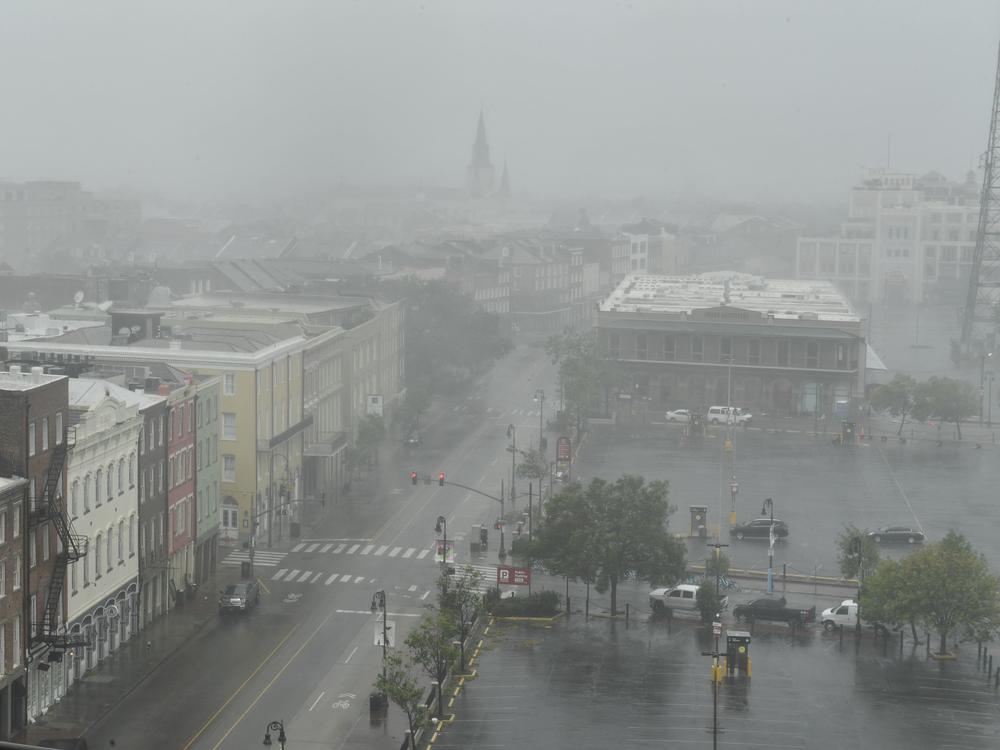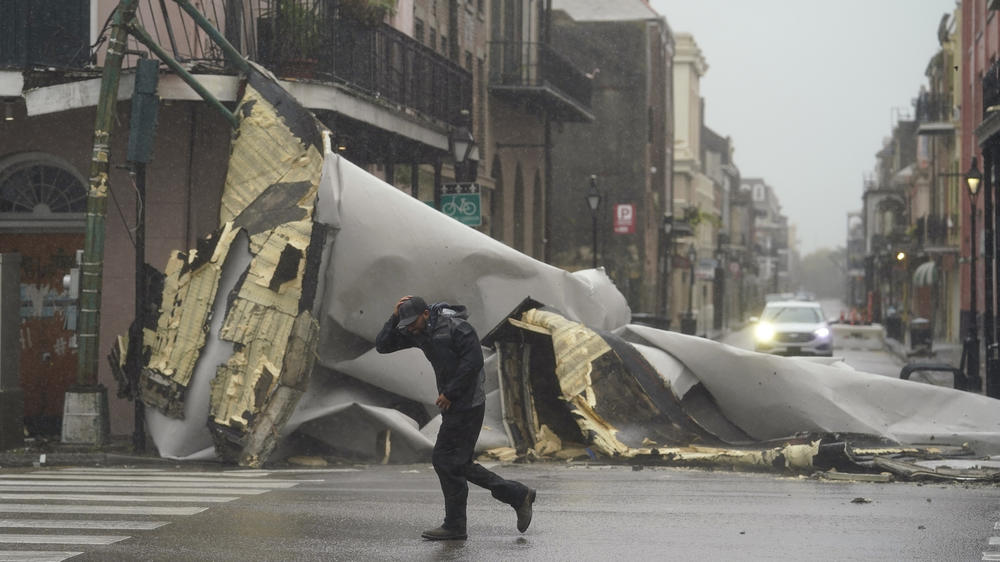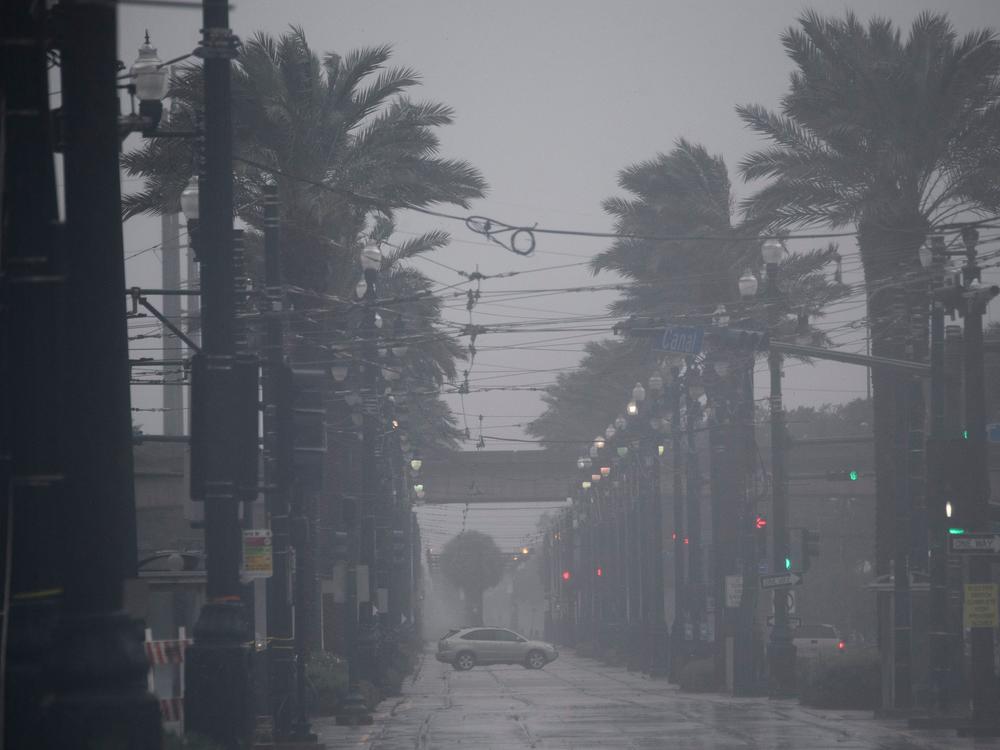Section Branding
Header Content
Hurricane Ida Brings Heavy Flooding And Fierce Winds To Louisiana
Primary Content
Updated August 29, 2021 at 10:23 PM ET
Hurricane Ida was causing catastrophic storm surge, extreme winds and flash flooding across sections of southern Louisiana as it came ashore Sunday as one of the strongest storms to ever hit the U.S.
More than 900,000 customers across Louisiana were without electricity on Sunday night, according to utility companies' reports tracked by PowerOutage.US.
Power was knocked out entirely in Orleans Parish by evening, as a result of "catastrophic damage" to Entergy New Orleans' transmission system, said the utility company. With generators serving as New Orleans' only power source, there are concerns about the city's pumping systems, which, when fully functioning, rely on electricity to power drainage.
The company warned that the state's hardest hit areas could experience power outages for up to three weeks.
"This is one of the strongest storms to make landfall in modern times," Louisiana Gov. John Bel Edwards said in a Sunday afternoon briefing. He urged those who hadn't evacuated to stay inside in an interior room of their house. Devastating winds and rain could last up to a day, and it could take still longer before services are restored. "Quite frankly we can't tell you yet how long it will be before first responders can respond to calls for assistance," he said.
Videos on social media showed heavy flooding in parts of New Orleans and nearby areas.
The National Hurricane Center said Ida made landfall at 11:55 a.m. CT as a Category 4 storm with sustained winds of 150 mph, according to a tweet from the center. It said Ida made landfall near Port Fourchon, La., roughly 100 miles from New Orleans. By Sunday evening, the storm had weakened slightly to a Category 3 but maintained maximum sustained winds of 120 mph. Its slow crawl across Louisiana also increases the risk of flooding from heavy rain and storm surge. The National Weather Service has issued flood-related warnings for large parts of the state.
Speaking at the Federal Emergency Management Agency's headquarters in Washington, D.C., Sunday, President Biden called the storm "life-threatening."
"Everyone should listen to the instructions from local and state officials [regarding] just how dangerous this is and take it seriously," Biden said. "It's not just the coast, it's not just New Orleans — it's north as well. The rainfall is expected to be exceedingly high."
The storm had the Crescent City bracing for danger. At a briefing just before Ida made landfall, New Orleans Mayor LaToya Cantrell urged residents and visitors who did not already evacuate the area to stay inside.
"This is a very dangerous and a very real situation," Cantrell said.
Cantrell said the she and other officials expect the storm to have fully passed over New Orleans by Monday morning. But until the storm is over, she warned residents not to rush out from their homes until it is safe.
"As it relates to Monday morning, we should see some signs that we are moving out of this," she said. "But you are not to come outside until you receive more information from the city of New Orleans."
Collin Arnold, director of the New Orleans Office of Homeland Security and Emergency Preparedness, said people "absolutely need to be indoors" for the remainder of the storm.
"These are life-threatening winds," Arnold said. "They will cause downed power lines, structure damage, downed trees and projectiles."
Ida arrives on the anniversary of Katrina
Ida's arrival comes 16 years to the day that Hurricane Katrina first made landfall in southern Louisiana — causing over 1,800 deaths and $125 billion in damage across the region.
Video from Bourbon St. in New Orleans on Sunday showed rain pummeling what is normally a bustling strip for tourists. Strong winds could be heard on the audio from the feed.
Jamie Rhome, the acting deputy director of the National Hurricane Center, told NPR the storm's massive size is likely to cause widespread damage across the region.
"You're talking about a wide swath of hurricane force winds pushing inland over this afternoon and evening, impacting the New Orleans area with hurricane force winds and certainly gusts in that those conditions would absolutely bring down trees, widespread power outages," Rhome said Sunday morning, ahead of the storm making landfall.
Climate change is making storms much more powerful
Hurricanes are more likely to be larger and more powerful when they form over hotter ocean water, as Ida has done. Climate change is causing global sea surface temperatures to rise.
"We're seeing the impacts from hurricanes increase — owing to climate change — due to a myriad of reasons. They tend to hold more rain in a warmer environment," Rhome said. "In the summer, it's muggy [and] holds more moisture. Same is true with with hurricanes. If you're warmer, they can hold more moisture, which means you get more rain or more potential for really heavy rainfall."
In a virtual briefing on Saturday, President Biden said Americans have seen other extreme weather events in recent weeks. He also noted the lingering effect of the coronavirus pandemic on emergency response efforts.
"Hurricane Ida is coming fast on the heels of a tragic flooding in Tennessee, Tropical Storm Henri, and you've all been part of the COVID-19 response for so many months now," the president said. "You've been overwhelmed, but you don't show it. You've been incredible."
Copyright 2021 NPR. To see more, visit https://www.npr.org.



